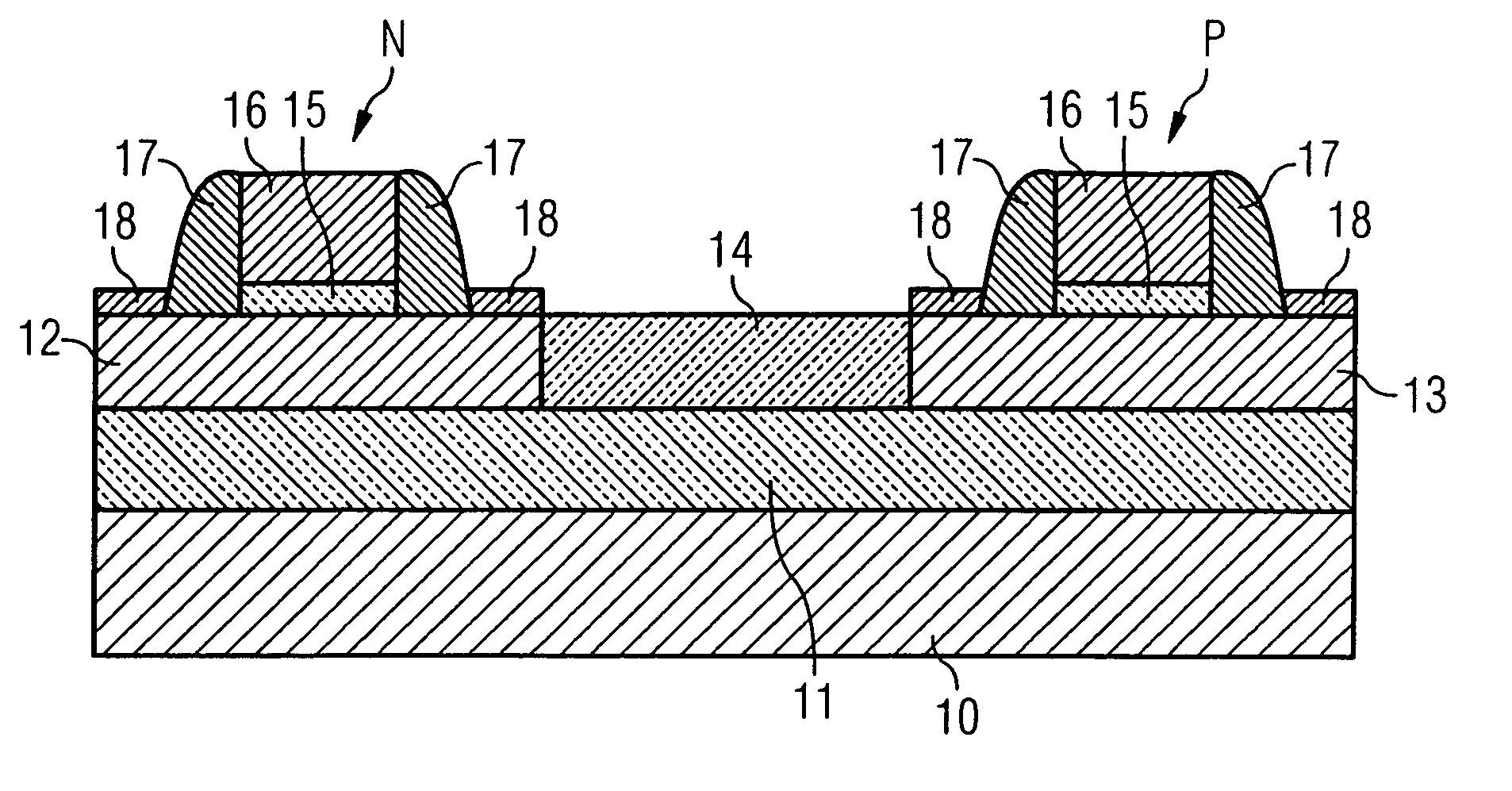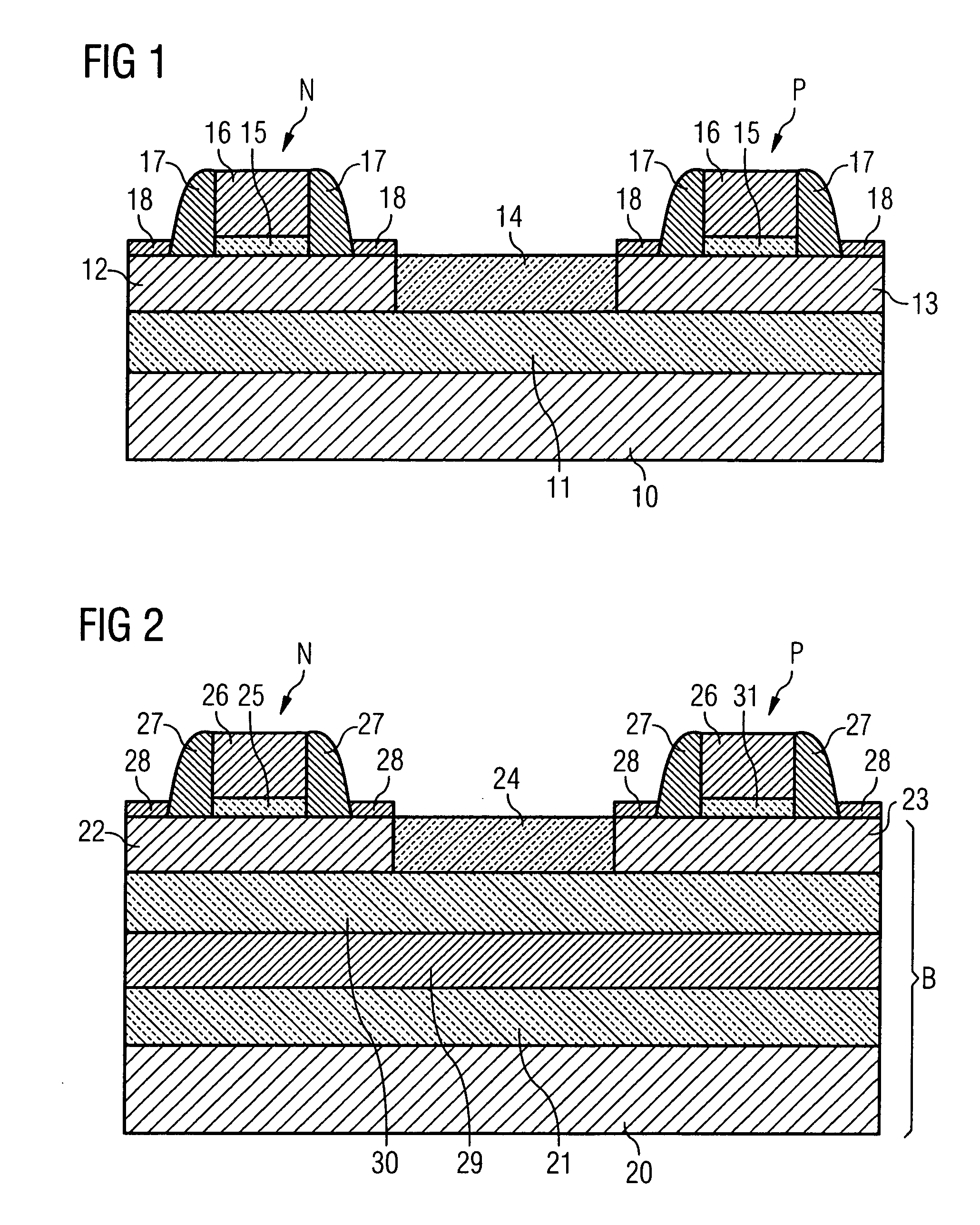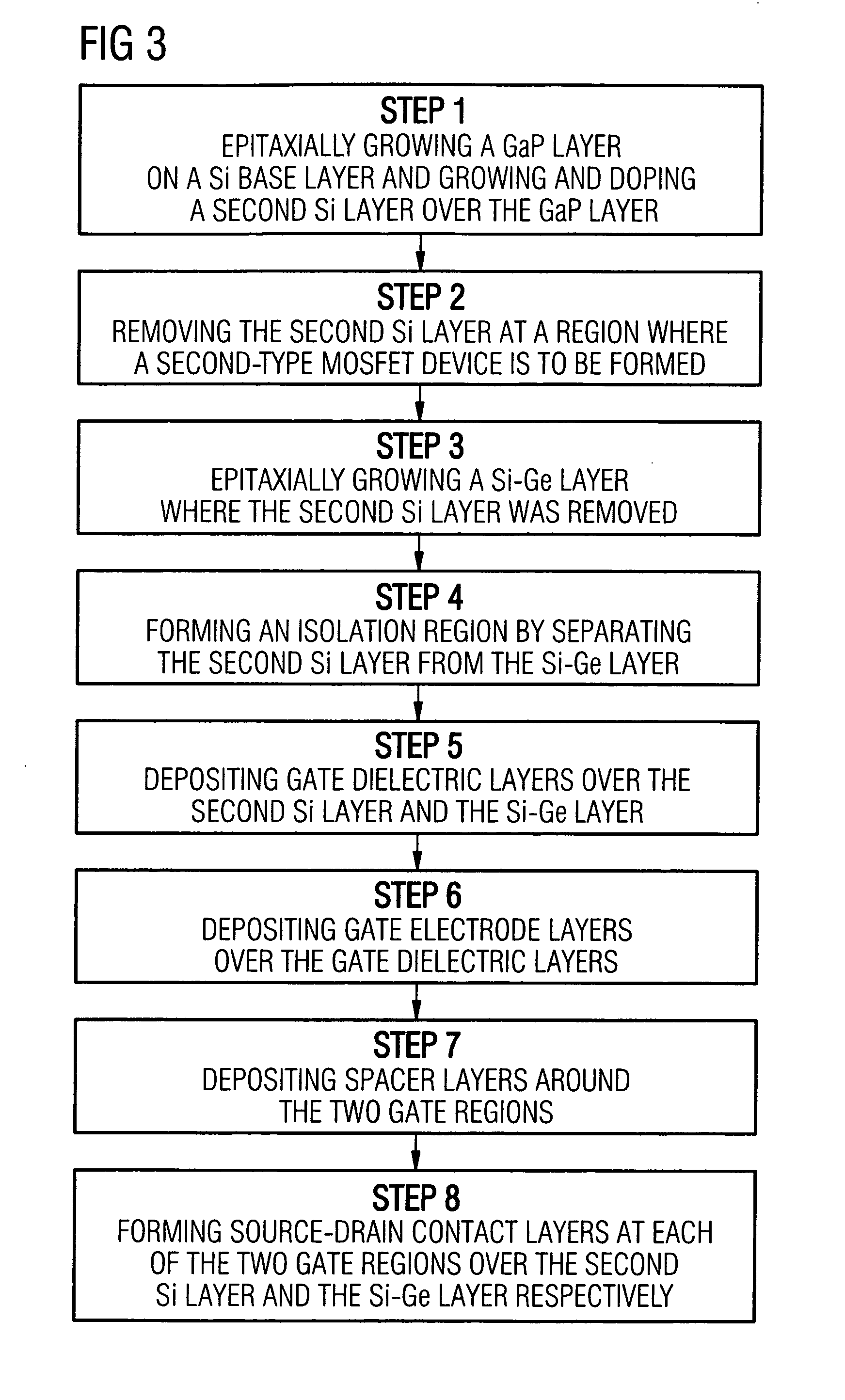Semiconductor device and a method of manufacturing such a semiconductor device
a semiconductor device and semiconductor technology, applied in the field of semiconductor devices and manufacturing methods, can solve the problems of increasing the cost of semiconductor devices, so as to improve the reliability, improve the performance, and reduce the thermal problems of self-heating
- Summary
- Abstract
- Description
- Claims
- Application Information
AI Technical Summary
Benefits of technology
Problems solved by technology
Method used
Image
Examples
Embodiment Construction
[0022] In both of the semiconductor devices shown in FIGS. 1 and 2, multiple semiconductor materials are integrated to form the device on a Si substrate 10 and 20 respectively. It should be noted that both FIG. 1 and FIG. 2 are diagrammatic and are not drawn to scale, the dimensions of the thicknesses of the various layers of semiconductor materials being exaggerated for greater clarity. Corresponding parts in both figures are given the same hatching and generally have the same references numerals but separated by ten, for example the Si substrate in FIG. 1 has the reference numeral 10 whereas in FIG. 2 the Si substrate has the reference numeral 20.
[0023] In both FIG. 1 and FIG. 2, the semiconductor device comprises a CMOS device wherein both an n-MOSFET device N and a p=MOSFET device P are formed on the same Si substrate 10, 20.
[0024] In the first embodiment shown in FIG. 1, the substrate also comprises a layer 11 of GaP provided over a base Si layer 10 to provide insulation and ...
PUM
 Login to View More
Login to View More Abstract
Description
Claims
Application Information
 Login to View More
Login to View More - R&D
- Intellectual Property
- Life Sciences
- Materials
- Tech Scout
- Unparalleled Data Quality
- Higher Quality Content
- 60% Fewer Hallucinations
Browse by: Latest US Patents, China's latest patents, Technical Efficacy Thesaurus, Application Domain, Technology Topic, Popular Technical Reports.
© 2025 PatSnap. All rights reserved.Legal|Privacy policy|Modern Slavery Act Transparency Statement|Sitemap|About US| Contact US: help@patsnap.com



